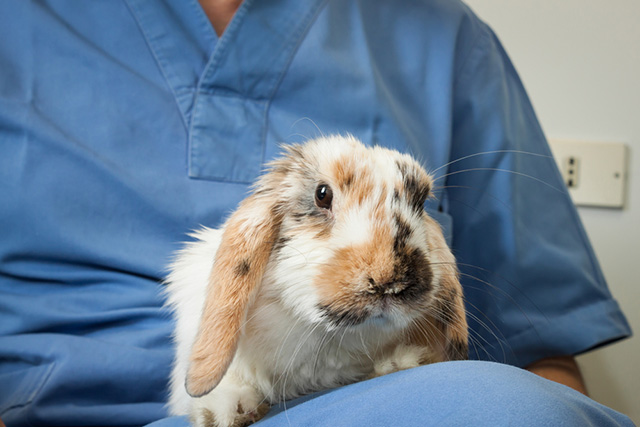Myxomatosis is caused by the Myxoma virus, a type of pox virus that only affects rabbits. It was first discovered in 1896 in Uruguay and was imported to Australia in 1951 to control its large rabbit populations – initially having the desired devastating effect.
The disease was illegally introduced to France in 1952 and it appeared in Britain the following year. It quickly spread to both wild and domestic rabbit populations and within a few years had spread throughout Europe. Myxomatosis has been a threat to wild and domestic rabbits ever since. All rabbits, whether wild or domestic are at risk of Myxomatosis.
How is Myxomatosis spread?
Myxomatosis is typically spread by blood sucking insects, and in particular the rabbit flea, Spilopsyllus cuniculi. This flea is frequently found on wild rabbits and transmission in the absence of bites is unusual. All breeds of domestic rabbit can be affected, with little to suggest that one breed is more susceptible than another, and whatever the lifestyle of your rabbit there is a potential risk of this disease. Mosquitos and other biting insects are also potential sources of disease transmission.
What are the signs and symptoms of Myxomatosis?
The incubation period varies depending on the strain and its virulence and is typically at least five days. Along with the classic bulging eyes that most of us associate with Myxomatosis, localised swellings develop around the head, face, ears, lips, anus and genitalia. Severe swellings can lead to blindness and distortion around the face within a day or so of the onset of symptoms, leading to difficulty with feeding and drinking. Bacterial respiratory infection often complicates the disease resulting in a fatal pneumonia.
How can Myxomatosis be prevented?
You can protect your rabbit against Myxomatosis with an annual vaccination but you can find more information about preventing your rabbit from catching the disease here.
How can Myxomatosis be treated?
Progress of the disease may be slower in well cared for pet rabbits and recovery is sometimes possible with intensive care however this disease is usually fatal. There is no specific treatment for the virus and any treatment offered is merely supportive. Treatment is occasionally contemplated but would not usually be recommended for rabbits with the full-blown disease since affected individuals have a low chance of survival and they remain a source of infection for other rabbits. The occasional individuals with milder disease may, however, recover with appropriate care.
Recovery in the wild occasionally occurs but for animals with severe signs, death usually occurs about 12 days after initial infection.

